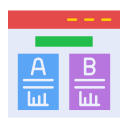Credentials, Recognition, and Career Outcomes
Certificates tied to recognized vendors or rigorous projects tend to resonate with recruiters. When a platform maps learning paths to role-based competencies, hiring managers can infer practical readiness rather than just theoretical familiarity with tools and terminology.
Credentials, Recognition, and Career Outcomes
Platforms that encourage GitHub-hosted projects, architecture diagrams, and documented decisions give you tangible proof. Recruiters skim repositories faster than resumes; a clean readme and thoughtful commit history quietly communicate maturity and attention to detail.
Credentials, Recognition, and Career Outcomes
Diego built a Kubernetes monitoring stack in a course project and showcased observability dashboards during interviews. The portfolio artifact sparked engaging discussions, turning an initially generic screen into a concrete demonstration of production-minded thinking and ownership.









